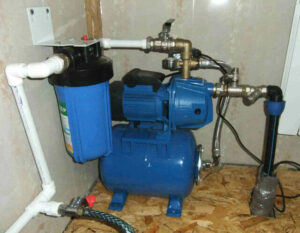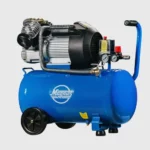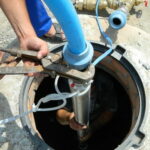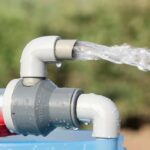Connecting a pumping station in a private house: diagram and instructions
Next, you will learn what a pumping station is and what its purpose is, the structure and operating principle of a pumping station, the pros and cons of pumping stations, how to connect a pumping station in a private house.
The content of the article
Pumping station - what is it? Purpose of pumping stations
A pumping station is a complex system of devices for supplying water to a room and increasing pressure in the pipeline.
Residents of private houses, as well as summer residents, know what a problem there is with water pressure in their houses - only a trickle of water flows from the maximally open tap. The pump is standing, working properly, pumping water from the source, but the pressure is low. Then they install a pumping station that pumps water into the system to a certain pressure.

Design and principle of operation of the pumping station
A standard pumping station with a hydraulic accumulator consists of 5 elements:
- Electric motor
- Pump
- Hydraulic accumulator
- Pressure gauge
- Pressure switch
All elements are connected to each other using pipes or other means.
The pumping station works like this:
An electric motor rotates the pump blades, which pump water from the water supply/pipe. Water rises from the pump and branches out - one branch goes to the hydraulic accumulator and fills the free space inside it.
The hydraulic accumulator is two-thirds filled with air, which is pumped into it at the factory. A flexible membrane separates the air from the water. Water compresses the air, and it tries to push it out - this increases the pressure in the pipeline.
The second branch - water fills the entire pipeline, and water also fills the flange of the pressure switch. The pump is still pumping water into the system.
The main components of the relay are springs, contacts, and a membrane. Water presses on a membrane, which presses on a piston with a spring.
When the pressure reaches a certain point, the membrane presses hard enough for the piston to open the contacts and the pump to turn off. The pressure at which the pump switches off and the difference between it and the switch-on pressure can be adjusted. Pressure is measured mechanically.
When you open the tap, the accumulator membrane pushes water out of it. The pressure in the system decreases. Then the water does not press hard enough on the relay membrane, and the contacts close and the pump turns on. The pump pumps water until the pressure in the system rises again.

Pros and cons of pumping stations
The advantages of pumping stations include:
- Autonomy
- They maintain pressure and pressure in the system
- Increases the efficiency of the water supply system
- Create a water supply
- Increases the service life of water supply equipment
- Reduce electricity costs
- Compactness
- Small dimensions
- Easy connection
Of the minuses:
- They make a lot of noise
- vibrate
How to connect a pumping station in a private house
First, choose a location to install the station.
Consider the length of the station cable and the distance to the outlet, the distance to the water source/pipeline, the humidity and temperature of the room.Devices not made of stainless steel/without special coating will become unusable due to corrosion in rooms with relative humidity above 85%. Most pumping stations cannot operate at subzero temperatures, with the exception of cast iron models.
Prepare a place for the unit - clean it, make a base of wood or concrete.
Place a rubber mat on the base where the station will stand. The device vibrates strongly during operation - rubber will dampen vibrations, so when choosing a pumping station, give preference to models with rubber gaskets on the legs.
Assemble a pumping station, if required.
Place the station in the prepared place.
Connect a tube with a cross-section for your station to the water supply pipe (for household models - 32 millimeters).
Connect the tube from the water source to the station. Install it at an angle - the angle between it and the pump is at least 1 degree.
Connect the water outlet pipe from the station to the water supply system of the house.
Tighten all connections.
Factory settings correspond to those indicated on the packaging. If you find them too little or too much, then adjust the pressure in the relay. To do this, disassemble the pressure switch housing and rotate the large spring nut clockwise to increase the shutdown pressure (when the pump stops pumping water into the system, what pressure will be in the pipeline). The pressure difference can be adjusted by rotating the nut of the smaller spring.
Connect the motor to the network.
Wait until air is released from the system.
Test the pumping station.
First, rusty water will come out - this is normal, the rust is washed off from the pipes/pump. Then clean water will come.




